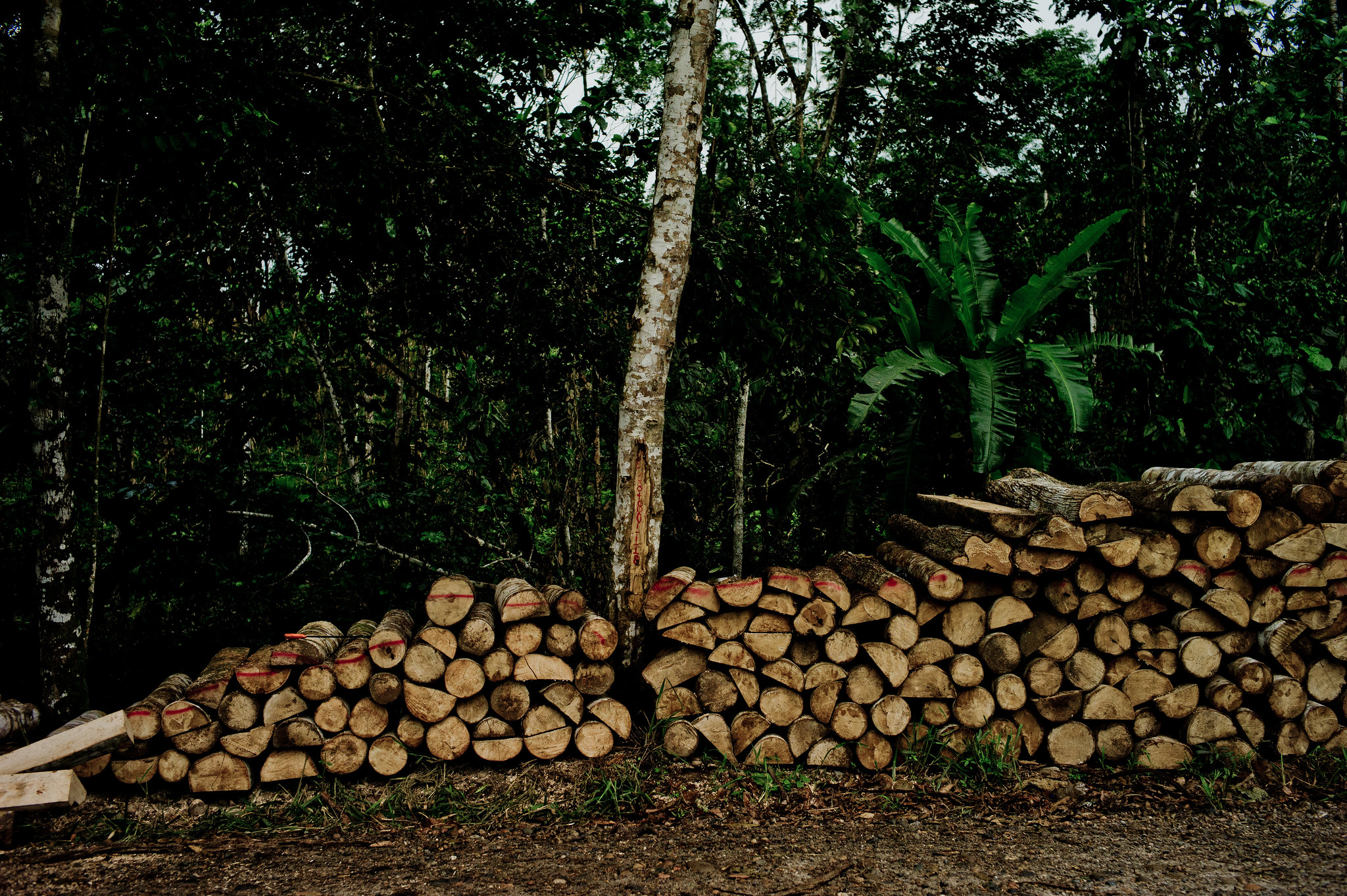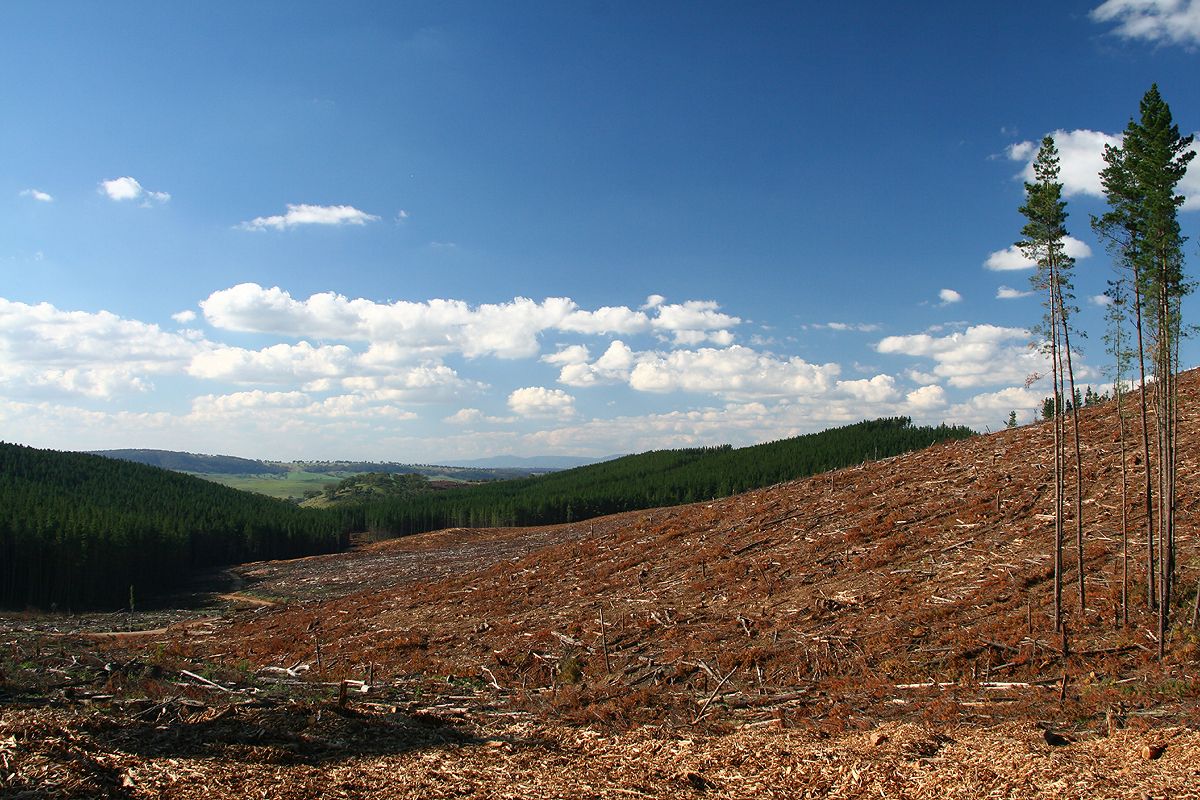
Sustainable Shopping
A consumer’s guide to purchasing wood products
By purchasing sustainable wood products, American consumers can encourage companies to implement policies that will protect the forests in their supply chains.

When it’s time to build a birdhouse, design your deck or replace your rocking chair, your wood purchasing choices can make a difference for the planet.
By purchasing sustainable wood products, American consumers can encourage companies to implement policies that will protect the forests in their supply chains.
What’s at stake?
Our planet lost more than 25 million hectares of forest in 2021, a land area nearly the size of the United Kingdom.
The devastation occurs across the globe, in hot, humid tropical forests humming with life; in tall, temperate forests enveloped in fog and moss; and in the vast boreal forest, which circles the northern hemisphere in a ring of spruce, firs and jackpines.
The production of beef, soy and palm oil drive the majority of deforestation in tropical rainforests. The extraction of wood products, including lumber, wood pellets and wood pulp is a major cause of deforestation and degradation in tropical rainforests, temperate
forests and boreal forests alike.
The onus for regulating logging and development in forests is on the world’s governments and companies, which should implement policies that protect the forests in their supply chains. Although these entities are slow to protect forests, consumers do have the power to encourage corporations to implement better policies faster by asking for and purchasing forest friendly products.
To read more about what’s at stake, download our consumer guide.

Photo by Bering Land Bridge National Preserve, CC BY 2.0 | CC-BY-2.0
Caribou. Photo credit: Bering Land Bridge National Preserve, CC BY 2.0
What should I buy?
Although companies ultimately decide which products are on shelves or offered online, consumers have enormous potential to influence those decisions. If consumer demand for a product decreases, maintaining a business-as-usual approach will be less profitable for suppliers. So, if consumers purchase less unsustainable wood and paper products and start purchasing forest-friendly products instead, that preference may drive and guide how companies stock their shelves and produce their goods.
Considering the state of the world’s forests, it’s time for consumers to flex their power and shift demand towards forest-friendly products: products made of recycled materials, non-wood alternatives or responsibly-sourced wood.
Recycled products
Recycled products are the most sustainable wood derived option because they reduce pressure on forests and prevent older wood-derived products from entering the waste stream. Recycled materials fall into two categories.
1. Post-consumer recycled content is made of previously- used materials. An example is reclaimed wood—wood salvaged from old barns, furniture, gym floors, or other places. Using reclaimed wood reduces pressure on forests while also lengthening the life span of the lumber, which consequently keeps the carbon stored in the lumber locked out of the atmosphere for longer. Unfortunately, reclaimed lumber and furniture are often more expensive than traditional lumber because they take longer to process than freshly felled wood, and the supply is less consistent (but you can find it at Home Depot, Etsy, Pottery Barn or eBay). Although reclaimed wood may be difficult to use for large-scale construction, it is a great option for artisan and DIY projects.
2. Pre-consumer recycled content originates from the manufacturing process; unused stock from publishing houses, for example, can be made into tissue paper. Paper scraps from manufacturing paper products such as envelopes are typically repurposed to make other paper products.
Investing in recycled content is the best option for conscious consumers.
Alternative materials
Recycling isn’t the only way to protect forests from deforestation and degradation. There is a promising alternative to wood: bamboo. Bamboo is a rapidly growing plant; it can be harvested just 3-4 years after planting and annually thereafter—much faster than wood, which is typically only harvested every 10-30 years. Other qualities that make bamboo an excellent substitute for wood-derived products include its strength, resistance to flame and elasticity. In addition to reducing pressure on forests, bamboo cultivation uses less energy than production of other building materials such as brick and cement. Bamboo can be grown on wasteland or unused river banks, which mitigates flooding potential and absorbs carbon from the atmosphere. Many companies have already adopted bamboo to produce tissue products and construction materials. However, not all bamboo is equally sustainable. When bamboo plantations replace natural forests, biodiversity plummets, and ecosystems suffer. Therefore, it is important to look for bamboo products certified by the Forest Stewardship Council, which verifies the bamboo was grown responsibly.
Bamboo is not our only option; there are dozens of alternatives to wood-derived products on the market. Wheat straw, a residue of wheat farming, can be collected and turned into tissue products rather than being burned or disposed of in landfills. Rather than building with lumber, innovators are creating novel construction materials, such as bricks made of post-consumer recycled plastics. Hempcrete, another possible replacement for lumber, is a construction material made from hemp plants. Even mycelium fungi is a promising substitute. While these products are limited in availability, they all reduce pressure on forest resources and demonstrate that innovation can overcome our perceived reliance on wood. As demand increases, alternatives to wood products are likely to become more widely available.
Responsibly Sourced Wood: Forest Stewardship Council (FSC) certification
For some projects, recycled wood may be unavailable and bamboo may be inappropriate. Unused wood, often from home improvement retailers such as Home Depot or Lowe’s, may be the only option. However, not all unused wood options are equal.
As consumer preferences trend more and more towards sustainable options, many companies respond by marketing their brands as “sustainable.” When a company’s claims about their environmental impact are misleading, this marketing is called “greenwashing.”
Greenwashing in the marketplace makes it difficult for consumers to purchase authentically sustainable products—as is the case in the wood and wood product market. The only way to ensure that a product is produced sustainably and ethically is to confirm that it has been certified by the Forest Stewardship Council (FSC).
To read more about FSC certification, download the full consumer guide.
What should I avoid?
Without a third-party certification, there is no way to verify that wood-derived products were harvested any more responsibly than is required by their place of origin’s government regulations, which may be biased towards the profitability of the logging industry. Consumers should avoid non-recycled wood products without FSC certification or no certification. In certain regions of the world where illegal logging is rampant, wood exports may not even be subject to governmental oversight. Whether due to lenient regulations or poor implementation of regulations, certain forests around the world are existentially threatened. Wood products from these threatened forest regions should be avoided entirely: The Amazon, Atlantic Forest/Gran Chaco, Borneo, Cerrado, Choco-Darien, Congo Basin, Eastern Africa, Eastern Australia, Greater Mekong, New Guinea and Sumatra.
Certain species of trees are especially vulnerable to logging, either because they are rare or threatened with extinction to some capacity. Vulnerable tree species should be avoided when purchasing wood products. The Wood Database lists tree species that may be identified as threatened by the Convention on International Trade of Endangered Species (CITES) or the International Union for Conservation of Nature (IUCN) or both.

Topics
Authors
Ellen Montgomery
Director, Public Lands Campaign, Environment America Research & Policy Center
Ellen runs campaigns to protect America's beautiful places, from local beachfronts to remote mountain peaks. Prior to her current role, Ellen worked as the organizing director for Environment America’s Climate Defenders campaign. Ellen lives in Denver, where she likes to hike in Colorado's mountains.
Sammy Herdman
Former Save The Boreal Forest Campaign, Associate, Environment America Research & Policy Center
Find Out More

How environmentally friendly is your chocolate?

How environmentally friendly is your chocolate?

Threatened Forests



